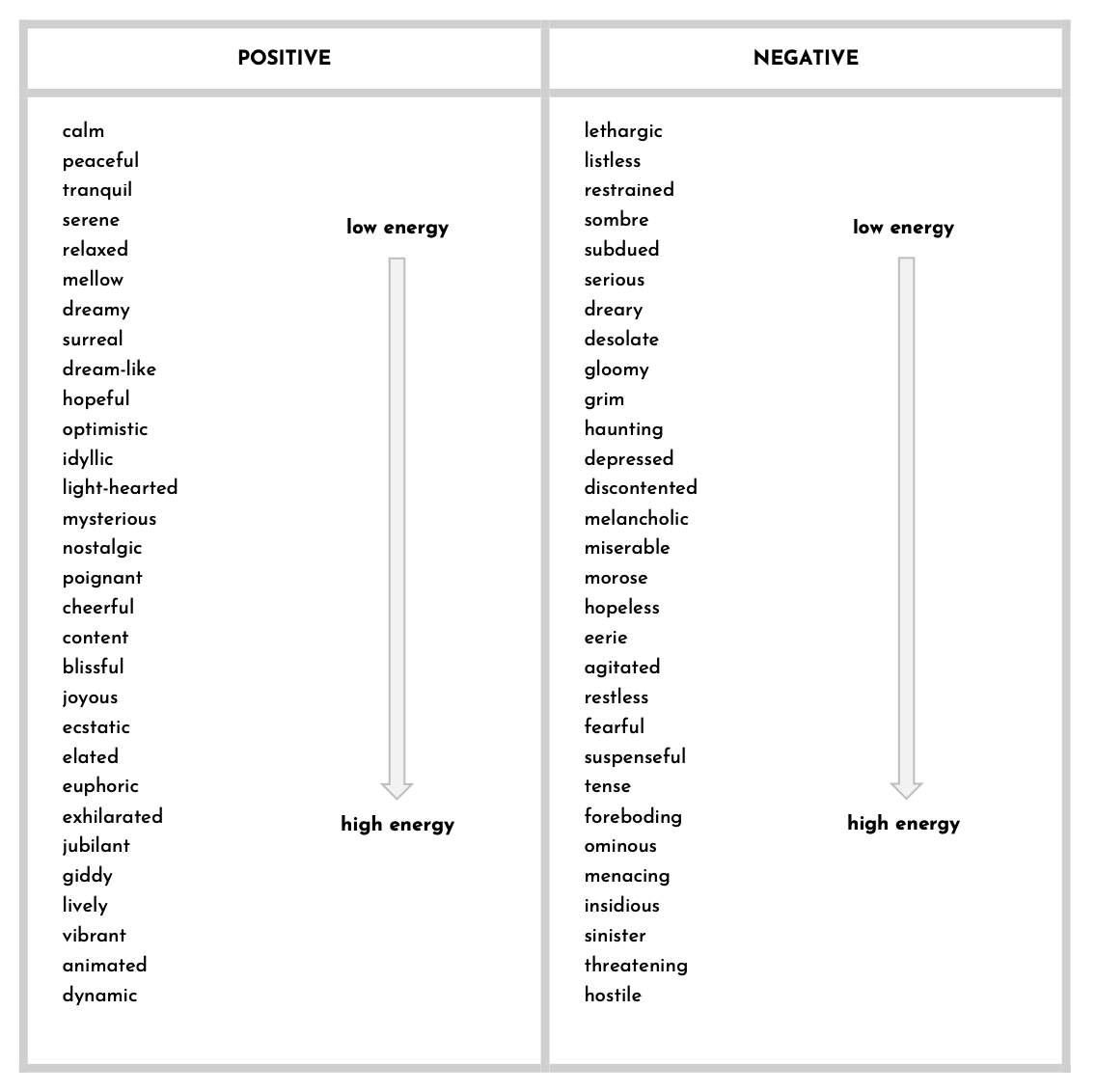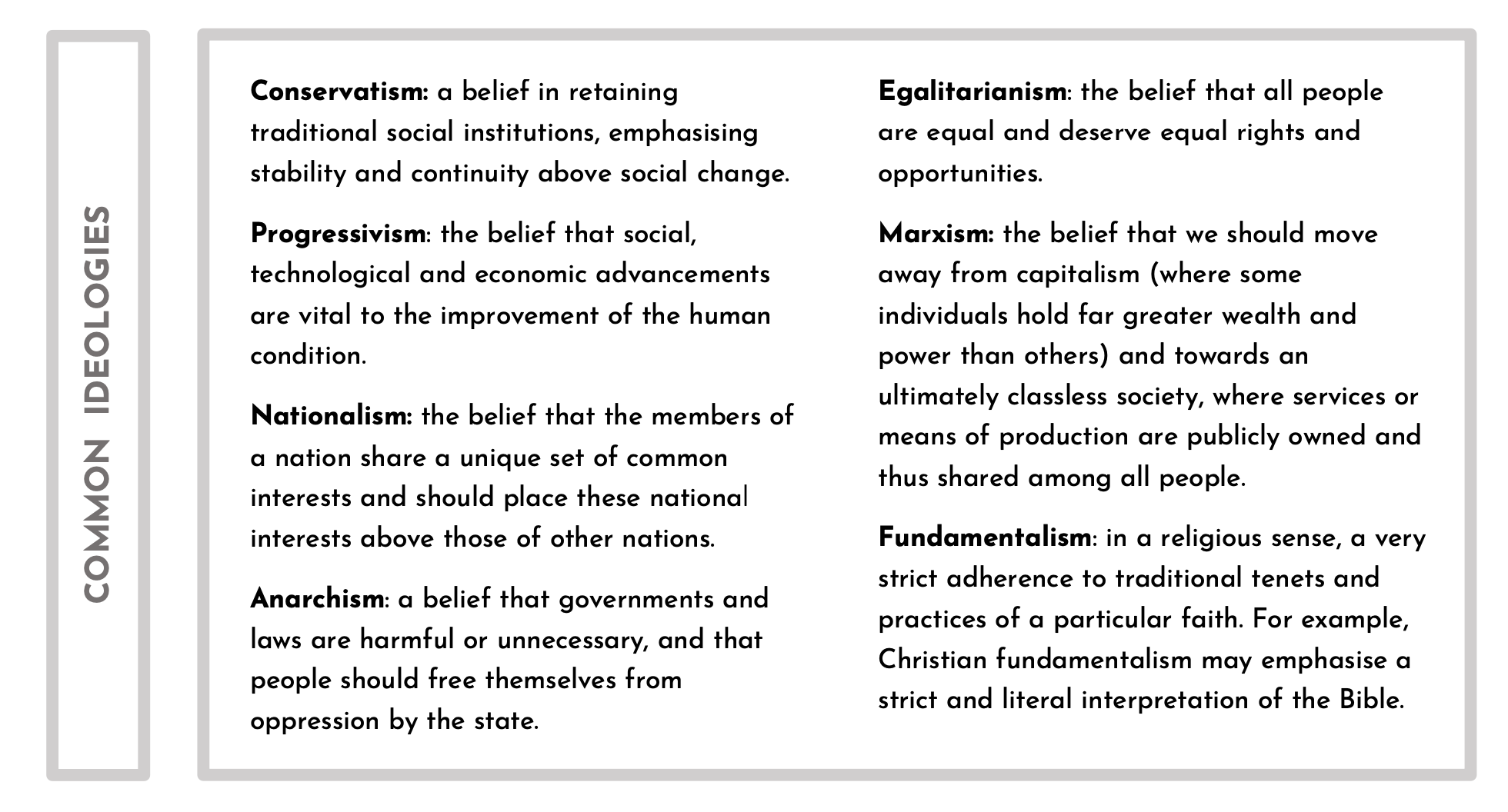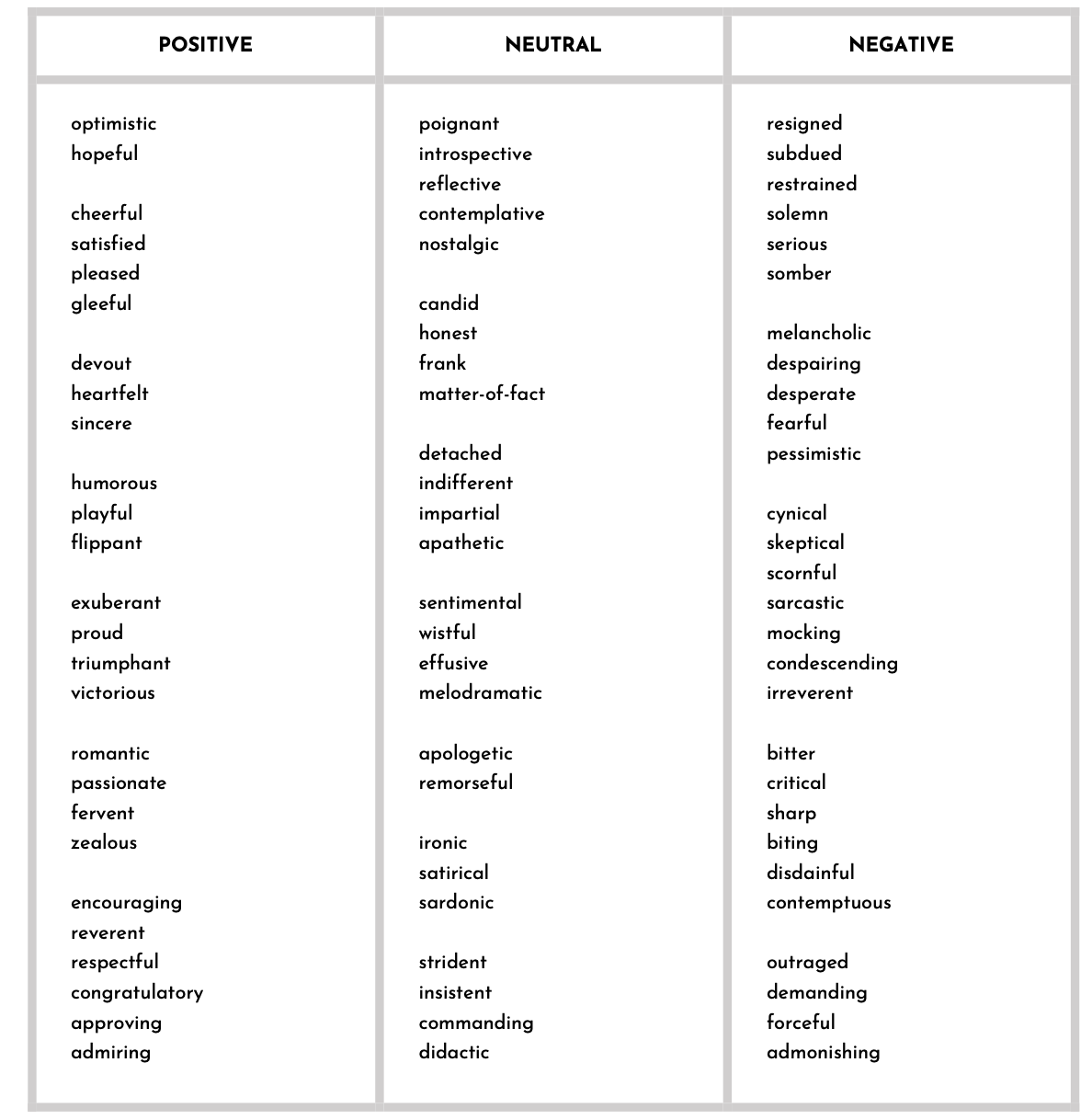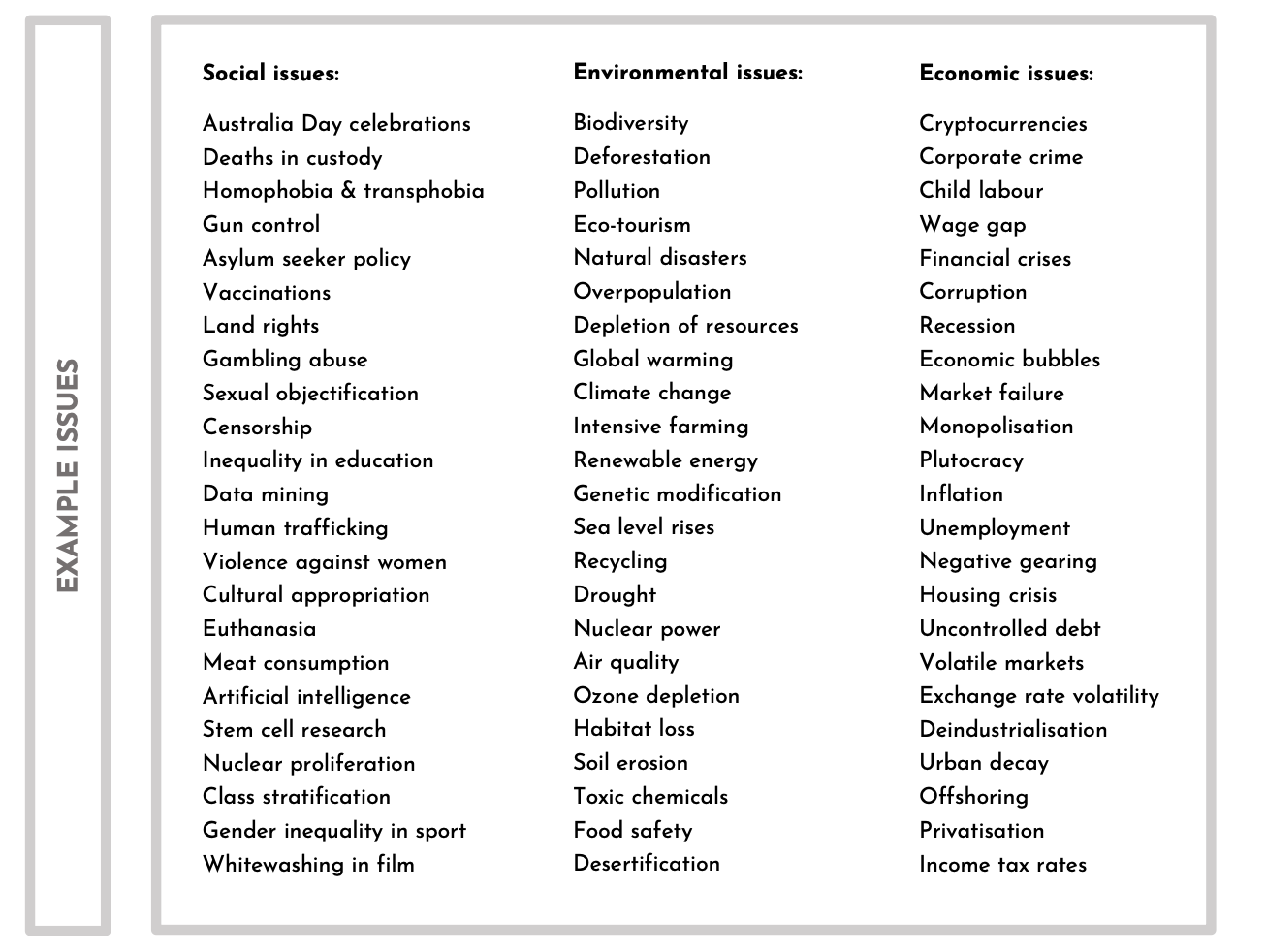COURSE CONCEPTS- COMPREHENDING
1/17
There's no tags or description
Looks like no tags are added yet.
Name | Mastery | Learn | Test | Matching | Spaced |
|---|
No study sessions yet.
18 Terms
mood
Mood is the atmosphere or feeling in a text, which is often created through the use of descriptive language and imagery.
examples of mood

representation
way people, places, events or subjects are presented in a text
The text represents [subject] as [description]
e.g. The text represents children as innocent and vulnerable.
The text constructs a [description] representation of [subject]
Gendered groups (men/women/trans/non-binary)
Cultural or ethnic groups
Classes (upper class, middle class, working class)
Age groups (children, teenagers, adults, the elderly)
examples of values

examples of attitudes

interpretation
refers to the process of making meaning from a text.
dominant- reading from majority people in society
alternative- differs from the dominant reading
resistant- contradicts dominant interpretation
meanings
not one set meaning
literal- surface-level, objective meanings
interpreted- shaped by context or readings
implied- suggested meanings
connoted- shaped by mental associations
symbolic- deep, amblematic meanings
ideologies
Ideology refers to a set or system of beliefs, values and attitudes, centering around such things as religion, politics or economics.
common ideologies

mode
"Mode" refers to the process of communication: writing (written mode), speaking (spoken mode), visuals (visual mode), sound (aural mode) and gestures (gestural mode). Multimodal texts combine at least two of these modes.
written vs spoken mode
tone
Tone describes the attitude of the author: the feeling associated with their voice in the text.
examples of tone

perspectives
A perspective is a position from which things may be viewed or considered.
The text presents a [context] perspective on [subject], viewing it as [opinion]
come from author or the characters
socio- cultural- age, gender, class, nationality, religion, cultural backround, profession/ role.
ideological- feminist, capitalist, marxist, nationalistic
time related- period of time
physical perspective- angle between narrator and subject
voice
The voice of a text is the personality of a piece of writing, which we associate with the author, the narrator or a character in the text.
example issues

idea
messages, thoughts, notions, opinions, views or beliefs
The text conveys the idea that.... (full statement)
audience
age, gender, cultural background, ethnicity, class, profession, ideology, social roles and relationships
purpose
aim writer trying to produce in a text
- entertain or provoke
- thinking, feeling or acting responses
imaginative texts-entertain or provoke thoughts
interpretative texts- explain and interpret issues/ ideas e.t.c
persuasive texts- put forward a point of view
analytical texts- identify, examine and draw conclusions